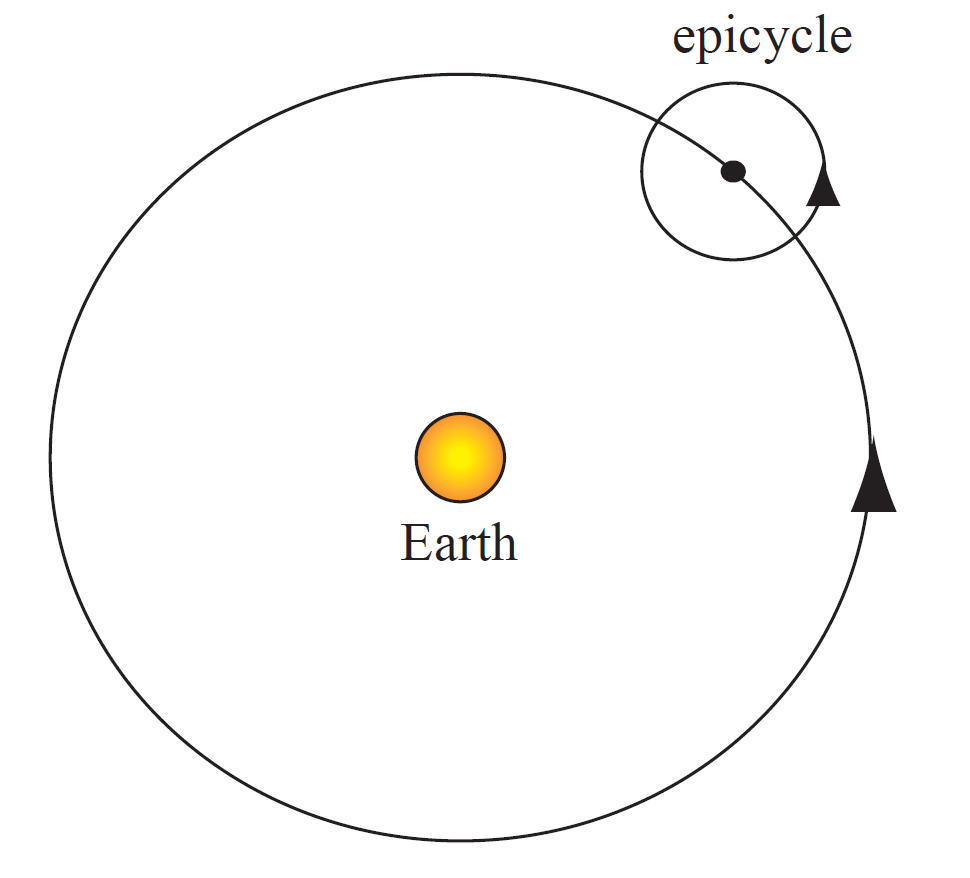


 الفيزياء الكلاسيكية
الفيزياء الكلاسيكية
 الكهربائية والمغناطيسية
الكهربائية والمغناطيسية
 علم البصريات
علم البصريات
 الفيزياء الحديثة
الفيزياء الحديثة
 النظرية النسبية
النظرية النسبية
 الفيزياء النووية
الفيزياء النووية
 فيزياء الحالة الصلبة
فيزياء الحالة الصلبة
 الليزر
الليزر
 علم الفلك
علم الفلك
 المجموعة الشمسية
المجموعة الشمسية
 الطاقة البديلة
الطاقة البديلة
 الفيزياء والعلوم الأخرى
الفيزياء والعلوم الأخرى
 مواضيع عامة في الفيزياء
مواضيع عامة في الفيزياء|
Read More
Date: 29-12-2016
Date: 3-12-2020
Date: 5-10-2020
|
GRAVITATION
The study of gravitation has been one of the core areas of physics research for the last 500 years. Indeed it was the study of gravity that revolutionized much of our thinking of our place in the universe, for one of the key results in the last 500 years was the realization that Earth is NOT the center of the universe. This has had profound and dramatic consequences for all of humankind. (I personally believe that an equally profound effect will take place if extraterrestrial intelligent life is found.) We shall approach our study of gravitation a little different from the way Halliday discusses it. I wish to emphasize the historical approach to the subject because it is interesting and helps us understand the physics much better. A wonderful book that tells the whole story in nice detail is by R. Kolb, "Blind Watchers of the Sky" (Helix Books, Addison-Wesley, New York, 1996). This would be great reading between semesters! Some of the key historical figure are the following:
Claudius Ptolemy (l40 A.D.)
Nicolaus Copernicus (1473-1543)
Tycho Brahe (1546-1601)
Galileo Galilei (1564-1642)
Johannes Kepler (1571-1630)
Isaac Newton (1642-1727)
Albert Einstein (1879-1955)
I would now like to just briefly describe the contributions of each of these figures. We shall elaborate on the mathematical details afterwards. In the system of Ptolemy (l40 A.D.), the Earth was believed to be at the center of the universe and the Sun, Moon, stars and planets all revolved around the Earth, as seems to be indicated by simple observation. However, upon closer inspection it can be seen that the planets (Greek word meaning wanderer) actually do not move in smooth circles about the Earth but rather do a kind of wandering motion. Actually they undergo a retrograde motion with respect to an observer on Earth. This retrograde motion was very puzzling to the ancients, and ran afoul of the idea that all heavenly bodies moved in pure circles. In order to save the theoretical notion of pure circles and yet to explain the observational fact of retrograde motion for the planets, Ptolemy introduced the idea of epicycles. Figure 1.1 shows that instead of a planet moving in a great circle about the Earth, as do the Sun and Stars, Ptolemy's idea was that another circle called an epicycle moves ina great circle around the Earth and the planets move around on the epicycles. This 'explains' the observations of retrograde motion. But Ptolemy's system leaves unanswered the question of where the epicycle comes from. However this system of epicylces enjoyed great success for over a thousand years.

FIGURE 1.1 Ptolemaic epicycle.
However later on came Copernicus (1473-1543), a Polish monk, who suggested that the Earth is not at the center of the universe. From a psychological point of view, this is probably the most important scientific idea in history. Copernicus thought instead that the Sun was at the center of the universe and that all the planets, including Earth, revolved around it. This provided an alternative explanation for the retrograde motion of the planets, for if the planets move at different speeds around the Sun, then from the point of view of an observer on Earth, the planets will appear to move forward and then backward depending upon the relative orientation. Tycho Brahe (1546-1601) was one of the greates observational astronomers in history. Of course the telescope had not yet been invented and all of Tycho's observations were with some geometric instruments and the naked eye. He mounted an intensive campaign to accurately record the motion of all the planets. After Tycho died, Johannes Kepler (1571-1630) obtained access to Tycho's precision data and was able to use it to figure out the exact motion of the planets to a high degree of precision. In particular Kepler discovered that the motion of the planets was not the perfect circle after all, but rather the motions were elliptical. From analyzing Tycho's data Kepler discovered 3 important facts about the planets. These are usually called Kepler's laws of planetary motion. They are
1) All planets move in elliptical orbits with the Sun at one focus.
2) The line joining any planet to the Sun sweeps out equal areas in equal times.
3) The period squared is proportional to the mean distance cubed, i.e. T2  R3. (The period T is the time it takes for a planet to complete one orbit of the Sun. For Earth this is 365 days. The mean distance R is the average distance from the Sun to the planet in question.) Meanwhile, Galileo Galilei (1564-1642) used the newly invented telescope to view the heavens for the first time. Among his many great discoveries, were observations of the moons of Jupiter clearly showing orbits around the planet itself. This was the first direct observation of bodies which did not orbit Earth. One important point to note about Kepler's laws is that they were 'mere' empirical facts. No one understood why they were true. In fact Kepler spent the rest of his life trying to explain then. It was not until Isaac Newton (1642-1727) invented a theory of gravity that Kepler's laws were finally understood on a theoretical basis. Newton had been thinking deeply about what holds the moon in orbit around Earth and what holds the planets in orbit around the Sun. The story goes that Newton was sitting under an apple tree watching the apples fall off the tree onto the ground. It suddenly occured to Newton that the force causing the apples to fall to the ground is the same force that keeps the moon in orbit about Earth and the planets in orbit about the Sun. What a great leap of imagination ! Newton hypothesized that the gravitational force between any two objects was given by an inverse square law of the form
R3. (The period T is the time it takes for a planet to complete one orbit of the Sun. For Earth this is 365 days. The mean distance R is the average distance from the Sun to the planet in question.) Meanwhile, Galileo Galilei (1564-1642) used the newly invented telescope to view the heavens for the first time. Among his many great discoveries, were observations of the moons of Jupiter clearly showing orbits around the planet itself. This was the first direct observation of bodies which did not orbit Earth. One important point to note about Kepler's laws is that they were 'mere' empirical facts. No one understood why they were true. In fact Kepler spent the rest of his life trying to explain then. It was not until Isaac Newton (1642-1727) invented a theory of gravity that Kepler's laws were finally understood on a theoretical basis. Newton had been thinking deeply about what holds the moon in orbit around Earth and what holds the planets in orbit around the Sun. The story goes that Newton was sitting under an apple tree watching the apples fall off the tree onto the ground. It suddenly occured to Newton that the force causing the apples to fall to the ground is the same force that keeps the moon in orbit about Earth and the planets in orbit about the Sun. What a great leap of imagination ! Newton hypothesized that the gravitational force between any two objects was given by an inverse square law of the form
 (1.1)
(1.1)
where m1 and m2 are the masses of the bodies and r is the distance between their centers. G is a constant. Note that this says that if the distance between two bodies is doubled the force drops by a factor of 4. The great triumph of Newton's gravitational theory was that he could derive Kepler's laws. We shall go through this derivation in a moment. The story of gravity is not complete without mentioning Einstein's General Theory of Relativity which was another theory of gravity completely at odds with Newton's theory. In Einstein's theory there is no mention of any forces at all. Rather, gravity is seen to be due to a curvature of space and time. The concept of force is more of an illusion. Einstein's theory was also able to explain Kepler's laws, but its advantage over Newton'e theory was that it explained additional facts about the planets such as the precession of the orbit of mercury and the deflection of starlight by the Sun. Actually even today the story of gravity is not complete. In fact of the 4 forces that we have identified in nature (gravity, electromagnetism, strong force, weak force), it is gravity that still remains poorly understood. The theory of quantum mechanics was invented early this century to describe the motion of tiny particles such as atoms. The great problem with gravity is that no one has succeeded in making it consistent with quantum mechanics. A recent theory, called Superstring theory, may be the answer but we will have to wait and see. By the way, the physics department at the University of Wisconsin-Milwaukee is one of the leading centers in the nation for the modern study of gravity.



|
|
|
|
أكبر مسؤول طبي بريطاني: لهذا السبب يعيش الأطفال حياة أقصر
|
|
|
|
|
|
|
طريقة مبتكرة لمكافحة الفيروسات المهددة للبشرية
|
|
|
|
|
|
|
جامعة الكفيل تناقش تحضيراتها لإطلاق مؤتمرها العلمي الدولي السادس
|
|
|